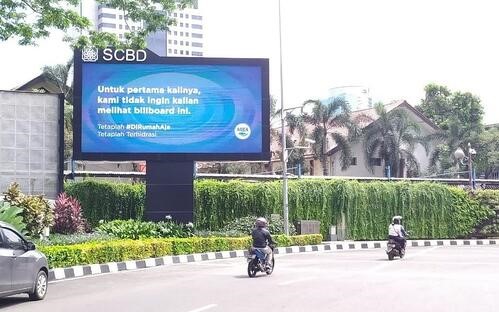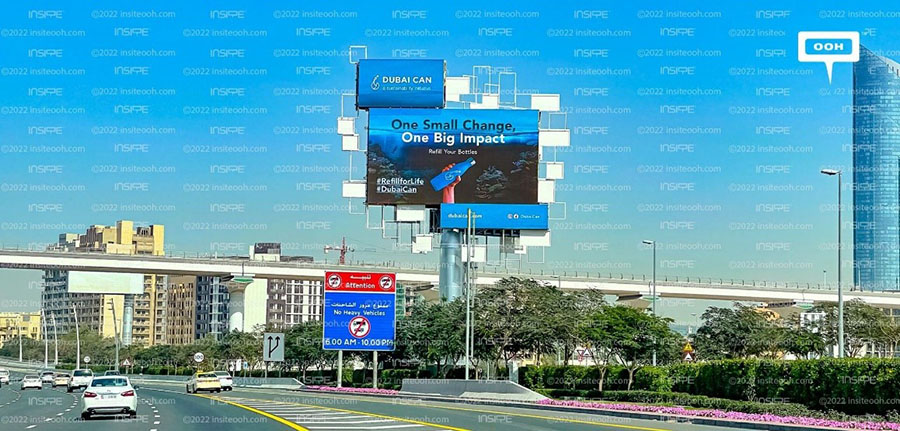Moving Walls’ Ikmal Omar, Quinn Amalore and Mehul Mandalia say there are many ways out-of-home or OOH advertising can promote sustainability, including through environmentally friendly campaigns as well as the installations themselves.
Sustainability and marketing ranked third among global marketers’ priorities, after marketing effectiveness and marketing capabilities, according to a WFA online member survey of 309 respondents who were asked to rate issues based on importance to them.
It shows that sustainability in advertising is not a fleeting trend or a new phenomenon – it has been on the mind of many brands and media owners alike as the younger generation is seen to be more health-conscious, socially aware and environmentally responsible.
When a business adopts sustainability practices, it means that they adopt strategies and re-invest in things that help the future. In other words, the efforts of brands that opt for sustainable growth do not come at the cost of people’s health and livelihood or, most importantly, the planet.
When brands actively make changes to policies and processes to show that they care about the environment, they would naturally be committed to:
- Linking corporate commitments to brands
- Making their commitments relevant to consumers
- Helping to nudge consumers towards the right path
Consumers today are willing to pay more for a product if a brand practises sustainability and cares about the wellbeing of the planet. A WARC report on sustainability states that sustainability is imperative for brands, with 83% of respondents always choosing the brand that practises sustainability in their marketing efforts.
Out-of-home (OOH) advertising can play a role in promoting sustainability. Not only does the industry provide a communication platform for brands to promote their sustainable capabilities but it also allows them to execute innovative environmentally friendly campaigns by way of the installation itself.
Different ways OOH contributes to long-term sustainability
Installing solar panels to power equipment
One notable method OOH can contribute towards long-term sustainability is by opting for assets that are more environmentally friendly. For instance, an Indian ad agency installed solar panels on digital billboards in the city to give free electricity to Indian railways. Such a renewable energy source does not contribute to emissions of greenhouse gasses, making it eco-friendly.
In recent years, many renewable energy companies and OOH advertising firms have collaborated to create important messages for the public. These companies are using billboards to advertise solar panels while showcasing their effectiveness in real time.
PG&E launched its solar-powered billboard, which stores the sun’s energy during the day to illuminate the billboard’s lights at night. The initiative has helped prevent more than 125 million tons of carbon dioxide from entering the atmosphere.
Using sustainable materials
When it comes to the manufacturing process, a clever alternative is to use sustainable materials in order to preserve the environment. To illustrate, the Lego company is known for its sustainability campaigns and initiatives when it comes to producing Lego bricks that are more sustainable and eco-friendly without compromising on quality.
OOH can play a role by changing advertising requirements and accepting or prioritising businesses that practise sustainable advertising. As OOH directly blends into the outdoors, it is the perfect medium to represent eco-friendly advertising.
Repurposing OOH
Another good example of sustainable billboards is Toyota’s campaign to promote its hydrogen-fuelled zero-emission electric cars. Aside from the car’s new eco-friendly emission technology, the campaign also turned billboards into pollution fighters by cladding them in vinyl and coated with titanium dioxide to purify the air throughout the campaign’s duration.
In London, a new billboard has a community garden built into the base. The billboard itself was made of sustainable oak and large planters. This sort of sustainability in advertising prompts spectators to think about natural resources and their implications for the public environment.
In a more recent example, OOH doesn’t just serve the purpose of delivering advertising but also as a medium for delivering public or community messages. During the pandemic, advertisers joined forces to display pandemic advice to stop the spread of the coronavirus.
Messaging and educating the masses
OOH can contribute to long-term sustainability in local communities by sponsoring youth education. OOH can advocate the importance of the medium and its pivotal role when it comes to promoting sustainable marketing, while Gen Z can learn about its importance and significance as they are the ones who tend to be the most oblivious to what’s happening around them.
OOH’s pivotal role is also spreading messages of awareness when it comes to marketing sustainability. This distribution of messages can be carried via different channels such as broadcast media, traditional media, digital media and OOH/DOOH. By spreading awareness, the general public can be educated about why it is important to be eco-friendly.
Case studies

Facade on SCBD Lot 23 Jakarta
1. We don’t want you to see this billboard
In a campaign executed in 2020, Danone Aqua leveraged programmatic DOOH across Jakarta to encourage people to stay home and stay hydrated.
This was the first programmatic DOOH initiative displayed on a digital billboard regarding the Aqua brand that was enabled by advertising technology provider Moving Walls. The core message of the campaign was centred around promoting good hydration practices. Just like other major cities, Jakarta imposed strict movement and social gathering limits during the pandemic and the creative efforts were kept up to date to encourage people to stay at home. It was a good to reach audiences who pass by the billboard every day.

The partnership between medical equipment supplier Danendra and Moving Walls resulted in sanitiser stations becoming a monetisable advertising opportunity
2. Hand sanitiser machines dish out ads
During the COVID-19 pandemic, unconventional screens turned into advertising options when smart hand sanitiser stations in Indonesia allowed ads to be streamed on their screens.
Danendra had a line of automatic hand sanitiser dispensers equipped with digital signage screens, which Moving Walls programmed with contextual ad-serving capabilities to enable advertisers to place campaigns on the sanitiser stations. Moving Walls also gathered location data on people that came in close proximity to Danendra’s screens for targeting purposes.

Campaign image from Insiteooh.com
3. Dubai Can
Dubai Can created a riveting sustainability initiative “RefillForLife" all over Dubai’s OOH platforms. It was a campaign encouraging people to use refillable bottles and enabling access to free and safe drinking water through the installation as well as the use of water stations across Dubai. It created a culture of conscious living by driving awareness of plastic alternatives and sustainability issues.
Raising the standards for sustainability
Out-of-home advertising continues to evolve as digital panels replace static billboards everywhere but there is still a debate about digital panels being harmful to the environment and a contributing factor to global warming.
But that is not the case as these next-generation digital screens are more efficient than the current generation in terms of infrastructure and disposition.
Digital panels eliminate the cost of physical production and distribution of advertising. In many instances, OOH companies are also key partners in helping to decarbonise cities.
There are many new forms of OOH or outernet media that offer brands a more varied kind of value, including sustainable media options.
Adtech and automation in OOH also lower energy use when planning and executing campaigns. OOH’s carbon impact itself is just a fraction of the overall carbon footprint as the medium is viewed by thousands of people.
As advertisers become increasingly environmentally aware, it is also important that they opt to partner eco-friendly media owners. We all have to play a part in preserving the earth and there’s no harm in identifying how OOH advertising or OOH placements can become just a little greener.

